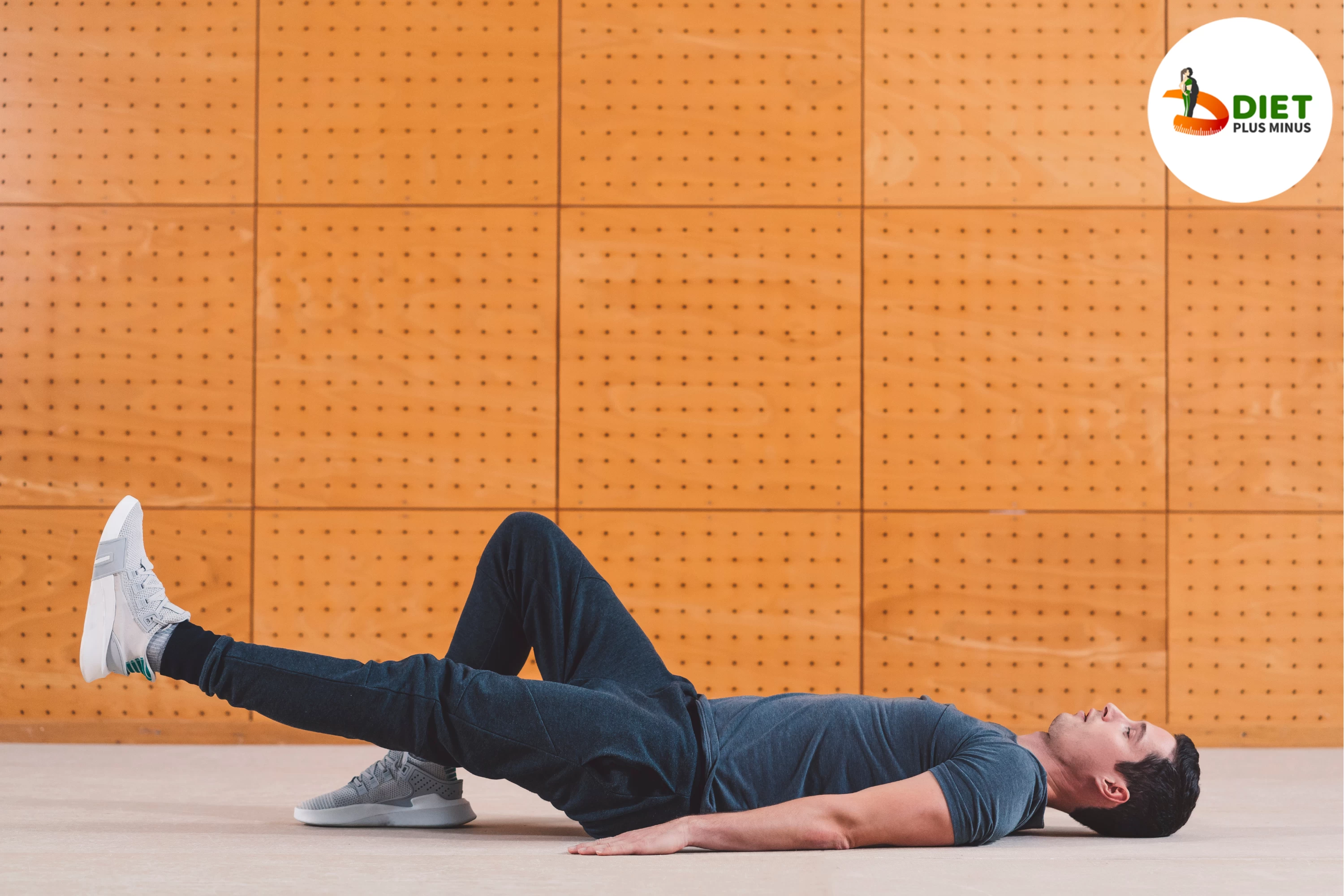Glutes: Single Leg Glute Bridge

Benefits of Glute Workouts
Single-leg glute bridges strengthen and shape glutes. This exercise targets gluteus maximus, medius, and minimus. It works your core and hamstrings.
This exercise improves posture, balance, and stability. You'll also gain strength and endurance. Strong glutes stabilise the pelvis, reducing lower back pain.
. Stronger glutes improve soccer and basketball running, jumping, and power.
Anatomy of Glutes
The single-leg glute bridge works the gluteus maximus muscle. Lie on your back with one leg bent and the other lifted for this exercise. From this position, lift your hips to the ceiling and squeeze your glutes. This exercise requires core engagement to prevent lower back pain and maintain stability.
The single-leg glute bridge works the gluteus maximus, hamstrings, hip flexors, and quadriceps. Strengthening these muscles together improves lower body strength and functional movement patterns.
Hold a weight across your hips or wrap a resistance band around both legs above your knees to intensify this exercise. These changes increase external resistance to challenge your muscles for better results.
Single Leg Glute Bridge Form
Single-leg glute bridges strengthen and tone glutes. Lying on your back with one leg extended, squeeze your glutes and lift your hips. This exercise targets gluteus maximus, hamstrings, and lower back. Start by lying on your back with your knees bent and feet flat on the ground to ensure proper form. Extend one leg straight ahead.
Lift your hips with one leg. For maximum benefit, keep your hips parallel and squeeze at the top of each rep. This exercise can cause lower back pain if you arch or round your back.
. Engage your core muscles to support proper form throughout each repetition. Single-leg glute bridges can strengthen these muscle groups and improve balance and stability in everyday activities like walking and running with consistent practise and proper form.
Benefits of Single Leg Glute Bridge
Single-leg glute bridges work glutes, hips, and thighs. This exercise boosts lower-body strength and stability. It reduces left-right body imbalances.
Single-leg glute bridges improve posture. This exercise strengthens spine-supporting muscles. It also relieves lower back pressure.
Single-leg glute bridges improve athletic performance. Running, jumping, and squatting will improve with strengthened muscles. Single-leg glute bridges improve appearance and function.
How to Do the Exercise
Single-leg glute bridges strengthen and tone glutes. Begin this exercise by lying on your back with knees bent and feet flat. Raise one foot straight up to the ceiling.
Hold this position for 2-3 seconds before slowly lowering yourself to starting position. Engage your core muscles. Switch legs after desired reps. This exercise requires keeping hips level and not tilting or sagging.
Place a dumbbell or resistance band across your lap or hold it with both hands during each repetition to increase intensity. This will challenge your glute muscles more, increasing strength over time. Single-leg glute bridges can improve lower body workouts with consistent practise.
Exercise Variations
The glute-hamstring-targeting single-leg glute bridge is popular. . Weighted single-leg glute bridges involve lifting one leg while holding a weight on your hips. This resistance stimulates your muscles and increases strength and tone.
Elevated single leg glute bridges involve placing your foot on a bench or step. This increases hip joint range of motion, stretching and activating more muscle fibres.
Finally, the banded single-leg glute bridge uses an elastic band around both legs above the knees. The band adds resistance and engages your muscles more during each repetition. These variations can be mixed and matched to challenge yourself and improve results through progressive overload training.
Common Mistakes to Avoid
Single-leg glute bridges are great glute exercises. This move has some common mistakes. Not engaging the core during movement is one. Without core engagement, your back may arch, causing lower back pain.
Single-leg glute bridgers also fail to drive through their heels. Pushing through your toes instead may engage more quads than glutes. .
Finally, don't rush each repetition. Taking time with each movement improves mind-muscle connection and rep efficiency. Glute activation will improve results over time. Avoiding these mistakes and focusing on form will help you build stronger, firmer glutes!
Conclusion
Finally, consistent and targeted glute exercises unlock their potential. The single-leg glute bridge isolates, strengthens, and improves hip stability. Regularly doing this exercise and gradually increasing resistance can strengthen functional movement.
While exercises like the single-leg glute bridge can target the glutes, strength training and proper form are also necessary to maximise their potential. Foam rolling and stretching can also relieve tightness and imbalances that limit glute activation.
Unlocking glute potential will improve aesthetics, athletic performance, and injury risk. To maximise their potential, don't neglect these powerful muscles!
In Short:
Steps involved:
-
Lie down with one knee bent and other with slight bent.
-
Keep your back straight and push up your hips so that your butt is elevated.
-
Tense your glutes and raise your hips towards the ceiling.
-
Once you are at the apex, pause for a few seconds and then slowly return back to the starting point. Repeat.
Do’s:
-
Always extend your hips fully.
-
Rub your glutes if you are not feeling them at the peak of the contraction.
-
Always maintain good control.
Don’ts:
-
Don’t use the momentum to push yourself up.
-
Don’t use toes and balls of feet.
-
Do not stick to the same rep range and tempo.
